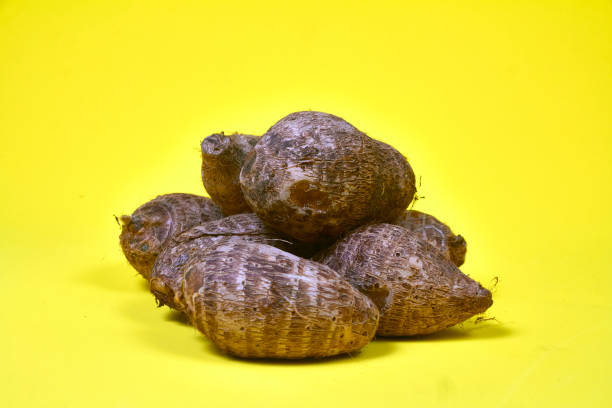mchec.org – Malanga, also known as cocoyam, taro (in some regions, though taro is a distinct species), eddoe, or dasheen, is a starchy root vegetable belonging to the Colocasia and Xanthosoma genera. While often compared to yams and sweet potatoes, malanga has its own unique characteristics, culinary uses, and cultural significance, particularly in tropical and subtropical regions around the world. This article explores the world of malanga, delving into its varieties, preparation methods, nutritional value, and cultural importance.
Botanical Classification and Varieties
Malanga encompasses several species within the Colocasia and Xanthosoma genera, leading to some confusion in common names. True taro (Colocasia esculenta) is a closely related but distinct species. Within the Xanthosoma genus, several species are commonly referred to as malanga, including Xanthosoma sagittifolium (white malanga) and Xanthosoma violaceum (blue or purple malanga). These varieties differ slightly in appearance, texture, and flavor.
- White Malanga: This is the most common variety, with a brown, hairy exterior and white flesh. It has a slightly nutty flavor and a firm texture when cooked.
- Blue/Purple Malanga: This variety has a purplish or bluish tint to its flesh and a slightly sweeter flavor than white malanga.
Cultivation and Harvesting
Malanga is typically cultivated in tropical and subtropical climates with warm temperatures and ample moisture. It thrives in well-drained, fertile soils. The plant is propagated from corms (underground stems) or from smaller tubers that develop around the main corm. Harvesting usually takes place several months after planting, when the leaves begin to yellow and die back.
Preparation and Cooking
Like other root vegetables, malanga requires cooking before consumption. Raw malanga contains calcium oxalate crystals, which can cause irritation to the mouth and throat. Proper cooking neutralizes these crystals. Common preparation methods include:
- Boiling: Boiled malanga is a simple and common preparation. The peeled and cut tubers are boiled in water until tender.
- Frying: Fried malanga, cut into slices or sticks, is a popular snack or side dish.
- Mashing: Cooked malanga can be mashed and used as a base for various dishes or as a side dish similar to mashed potatoes.
- Grinding/Pounding: Malanga can be ground or pounded into a paste or flour, which is used in baking, soups, and stews.
Regional Dishes and Culinary Uses
Malanga is featured in a wide array of regional dishes across different cultures:
- Caribbean: Malanga is used in soups, stews, and fritters. It is also a key ingredient in sancocho, a hearty Latin American stew.
- Africa: In some parts of Africa, malanga is used similarly to yams, boiled, fried, or pounded into fufu.
- Southeast Asia: Taro, a close relative, is used extensively in Southeast Asian cuisine, in dishes like taro root cake and taro bubble tea. While not strictly malanga, the culinary uses are similar.
Nutritional Value
Malanga is a good source of:
- Carbohydrates: Providing energy.
- Fiber: Promoting digestive health.
- Potassium: Important for heart health and muscle function.
- Vitamin C: An antioxidant that supports immune function.
It also contains other vitamins and minerals, although in smaller amounts.
Cultural Significance
Malanga holds cultural significance in many regions where it is cultivated and consumed. It is often featured in traditional dishes, celebrations, and cultural practices. In some cultures, it is associated with fertility and prosperity.
Distinguishing Malanga from Taro
While the terms “malanga” and “taro” are sometimes used interchangeably, they refer to distinct species. Taro (Colocasia esculenta) has larger, heart-shaped leaves and a more pronounced mucilage (sticky substance) when cooked. Malanga (Xanthosoma spp.) generally has arrowhead-shaped leaves and a drier texture.
Conclusion
Malanga, with its diverse varieties, culinary versatility, and nutritional value, is an important root vegetable in many parts of the world. From simple boiled tubers to complex regional dishes, malanga continues to be a staple food enjoyed across cultures. Its adaptability and cultural significance ensure its enduring presence in global cuisine and agriculture. While often compared to other root vegetables, malanga holds its own distinct place in the culinary world, offering a unique flavor and texture that has been appreciated for generations.

